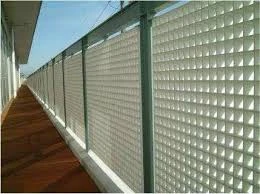
-
 Afrikaans
Afrikaans -
 Albanian
Albanian -
 Amharic
Amharic -
 Arabic
Arabic -
 Armenian
Armenian -
 Azerbaijani
Azerbaijani -
 Basque
Basque -
 Belarusian
Belarusian -
 Bengali
Bengali -
 Bosnian
Bosnian -
 Bulgarian
Bulgarian -
 Catalan
Catalan -
 Cebuano
Cebuano -
 China
China -
 China (Taiwan)
China (Taiwan) -
 Corsican
Corsican -
 Croatian
Croatian -
 Czech
Czech -
 Danish
Danish -
 Dutch
Dutch -
 English
English -
 Esperanto
Esperanto -
 Estonian
Estonian -
 Finnish
Finnish -
 French
French -
 Frisian
Frisian -
 Galician
Galician -
 Georgian
Georgian -
 German
German -
 Greek
Greek -
 Gujarati
Gujarati -
 Haitian Creole
Haitian Creole -
 hausa
hausa -
 hawaiian
hawaiian -
 Hebrew
Hebrew -
 Hindi
Hindi -
 Miao
Miao -
 Hungarian
Hungarian -
 Icelandic
Icelandic -
 igbo
igbo -
 Indonesian
Indonesian -
 irish
irish -
 Italian
Italian -
 Japanese
Japanese -
 Javanese
Javanese -
 Kannada
Kannada -
 kazakh
kazakh -
 Khmer
Khmer -
 Rwandese
Rwandese -
 Korean
Korean -
 Kurdish
Kurdish -
 Kyrgyz
Kyrgyz -
 Lao
Lao -
 Latin
Latin -
 Latvian
Latvian -
 Lithuanian
Lithuanian -
 Luxembourgish
Luxembourgish -
 Macedonian
Macedonian -
 Malgashi
Malgashi -
 Malay
Malay -
 Malayalam
Malayalam -
 Maltese
Maltese -
 Maori
Maori -
 Marathi
Marathi -
 Mongolian
Mongolian -
 Myanmar
Myanmar -
 Nepali
Nepali -
 Norwegian
Norwegian -
 Norwegian
Norwegian -
 Occitan
Occitan -
 Pashto
Pashto -
 Persian
Persian -
 Polish
Polish -
 Portuguese
Portuguese -
 Punjabi
Punjabi -
 Romanian
Romanian -
 Russian
Russian -
 Samoan
Samoan -
 Scottish Gaelic
Scottish Gaelic -
 Serbian
Serbian -
 Sesotho
Sesotho -
 Shona
Shona -
 Sindhi
Sindhi -
 Sinhala
Sinhala -
 Slovak
Slovak -
 Slovenian
Slovenian -
 Somali
Somali -
 Spanish
Spanish -
 Sundanese
Sundanese -
 Swahili
Swahili -
 Swedish
Swedish -
 Tagalog
Tagalog -
 Tajik
Tajik -
 Tamil
Tamil -
 Tatar
Tatar -
 Telugu
Telugu -
 Thai
Thai -
 Turkish
Turkish -
 Turkmen
Turkmen -
 Ukrainian
Ukrainian -
 Urdu
Urdu -
 Uighur
Uighur -
 Uzbek
Uzbek -
 Vietnamese
Vietnamese -
 Welsh
Welsh -
 Bantu
Bantu -
 Yiddish
Yiddish -
 Yoruba
Yoruba -
 Zulu
Zulu
frp clarifier system
Understanding the FRP Clarifier System
Fiberglass Reinforced Plastic (FRP) clarifier systems are increasingly being utilized in various industrial applications for the treatment of wastewater and effluents. These systems are designed to effectively separate solids from liquids, ensuring that treated water meets environmental regulations and is safe for discharge or reuse.
Understanding the FRP Clarifier System
One of the key components of an FRP clarifier system is its ability to enhance sedimentation. Through a combination of design elements, including a conical bottom, the system promotes the settling of solids by allowing them to naturally descend to the bottom of the tank. This settled material, known as sludge, is then periodically removed, either through manual or automated means, ensuring that the clarifier continues to function efficiently.
frp clarifier system

Moreover, many FRP clarifier systems incorporate advanced features such as lamella plates or tube settlers, which increase the surface area available for sedimentation. This innovation allows for a much more compact design while boosting the overall efficiency of the system. As a result, businesses can benefit from reduced footprint requirements, making FRP clarifiers a flexible solution in space-constrained environments.
Another significant advantage of FRP clarifiers is their low maintenance requirements. The smooth surface of fiberglass minimizes the accumulation of biofilms and other deposits, reducing the need for frequent cleaning. This not only saves time and labor costs but also extends the lifespan of the equipment, allowing for long-term operation with minimal interruptions.
Environmental sustainability is becoming a critical consideration for many industries, and FRP clarifier systems align with this trend. By improving the quality of wastewater discharge, these systems help companies minimize their environmental impact and comply with stringent regulatory standards. Furthermore, by facilitating the recycling of treated water, they contribute to the efficient use of water resources, which is increasingly vital in water-scarce regions.
In conclusion, FRP clarifier systems present a modern, effective solution for wastewater treatment. Their corrosion resistance, efficiency in sedimentation, low maintenance needs, and contribution to sustainability make them a compelling choice for industries looking to enhance their environmental stewardship while managing wastewater effectively. As technology advances, we can expect further innovations in FRP clarifier systems, making them an even more integral part of industrial water management practices.
Latest news
-
Exploring the Benefits of Top Hammer Drifter Rods for Enhanced Drilling PerformanceNewsJun.10,2025
-
High-Precision Fiberglass Winding Machine for GRP/FRP Pipe Production – Reliable & Efficient SolutionsNewsJun.10,2025
-
FRP Pipes & Fittings for Shipbuilding - Corrosion-Resistant & LightweightNewsJun.09,2025
-
Premium FRP Flooring Solutions Durable & Slip-ResistantNewsJun.09,2025
-
Premium Fiberglass Rectangular Tanks Durable & Lightweight SolutionNewsJun.09,2025
-
Tapered Drill String Design Guide Durable Performance & UsesNewsJun.09,2025









